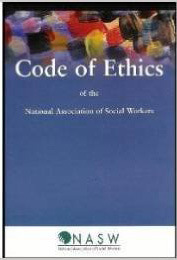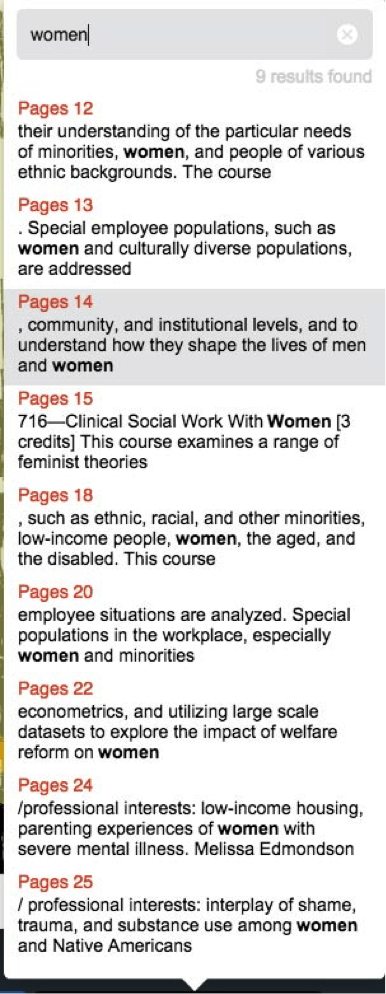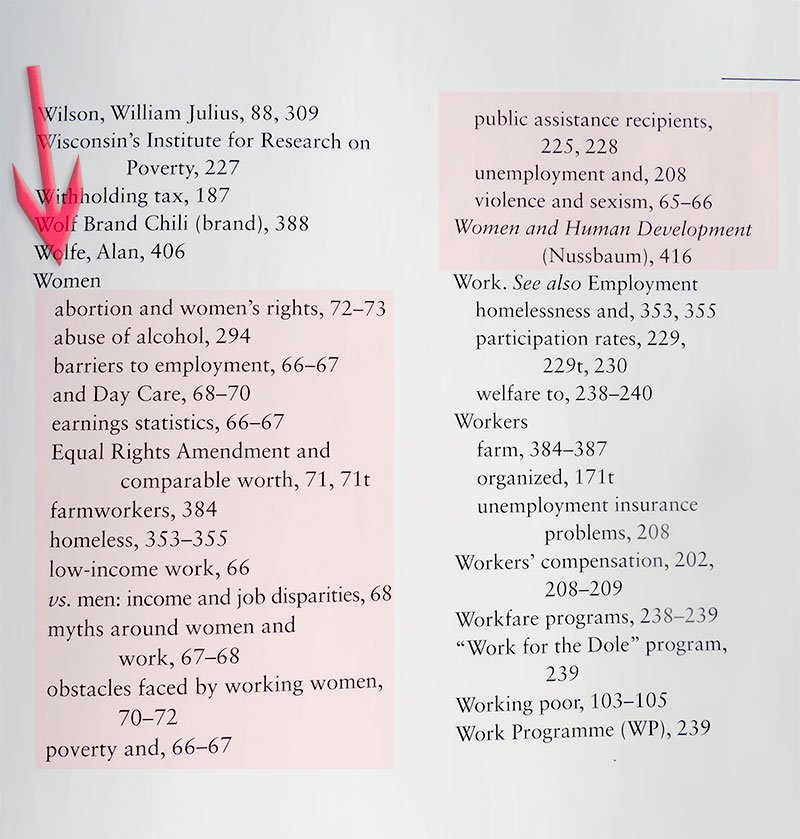 Part One of this article addressed some of the historical aspects of gynocentrism, its necessity in early civilization as a survival mechanism, and how it has become antiquated and restrictive for both sexes as we evolved into modern society.
Part One of this article addressed some of the historical aspects of gynocentrism, its necessity in early civilization as a survival mechanism, and how it has become antiquated and restrictive for both sexes as we evolved into modern society.
We examined how men and boys, even after decades of a “sexual revolution,” are still very tightly bound by expectations based on their sex, and indeed how this even extends pervasively into the areas of mental health and social work.
Time after time, as we look first to the NASW Code of Ethics, then examine what is actually happening in real world social work, we see a profession that has all but severed itself from its guiding principles and has done so in order to practice sexual discrimination rather than prevent it.
I cited examples from the areas of domestic violence services, genital mutilation, suicide prevention and other areas where the social work profession has become a wealth of contradictions and an embarrassing lack of ethics that often crosses the lines into civil rights violations.
Sadly, social work schools do little to address any of these things. In fact, as we further this examination we will see that social work schools are actually contributing to the problem rather than helping.
While it is not an excuse for violating the NASW Code of Ethics, it is little wonder that most social workers are unaware of the issues men and boys face, given that all these issues are simply ignored and even suppressed by the social work educational system.
That is not hyperbole and I am about to prove it to you.
What you do see in social work education is a lop-sided (read discriminatory) focus on women and their issues. There is no question that women face hardships. There is also no question that they are not alone in that capacity.
The social work code of ethics rightly states in the preamble that social work is concerned with ALL people and yet our social work educational system is actively and consciously avoiding and ignoring difficulties faced by half the population based on their sex.
Here’s what the Code says:
1.05 Cultural Competence and Social Diversity (c) Social workers should obtain education about and seek to understand the nature of social diversity and oppression with respect to race, ethnicity, national origin, color, sex, sexual orientation, gender identity or expression, age, marital status, political belief, religion, immigration status, and mental or physical disability.
So the Code encourages us to understand diversity based on sex and to practice with informed compassion about the same. Let’s take a look at what the schools charged with educating our social workers actually provide.
If you survey the courses of an MSW program you will see courses about working with women, gays, minorities and other special populations but what you are very unlikely to find are courses about working with men. Specialized training is vital for an education that works to enhance the understanding of practitioners and to further the mandates of the NASW Code.
Yet when we acknowledge that men comprise a large portion of social work clients and certainly represent a population in need of those services we must also conclude that they are, as a group, largely marginalized in social work education.
At this point perhaps you can think back to Part One of this series for a moment and recall what I said about gynocentrism; about how human beings have an instinctive fear about and resistance to elevating the needs of men into a prominent position.
Could it be that gynocentrism at least partially explains the exclusion of men, as a group, from social work education?
Are the schools breaking their own code of ethics by focusing on one sex and ignoring the other?
A quick glance at the University of Maryland School of Social Work’s online available coursesshows a course focusing on clinical issues with women, one on clinical issues with adolescents, one for clinical issues with gays, one for clinical issues with African Americans, one for aging, one for immigrants, one for just about everything but none for men. If you search on their web site for the word “women” you get nine results. See below:
When you search for “men” you get three results, all of which say “men and women.” Can you see how men would feel marginalized by that sort of thing? There is zero interest in teaching about men and their needs while the dominant focus is on women, girls, minorities, and gays. That is not acceptable.
At this point you may be in disagreement. It is common, especially within the social work profession, to operate on the assumption that these specialized courses are a natural response in a world which has always been about prioritizing men (the subtext of that being that men either do not need or do not support).
It should be noted that the assumption that men need no specialized support is directly a part of the gynocentrism we have discussed in this series. It is also a product of misandry. Misandry, even if not hatred of men and boys, is a rationalized neglect of and indifference to their pain and suffering.
It is the same mode of thinking demonstrated by people who scoffed at women’s suffrage or indeed wondered what on earth African Americans were complaining about in the 1950s rural south. And it is in clear and egregious violation of the NASW Code.
Another way to evaluate the degree that men and boys are being ignored in social work education is to have a look at the index of social work textbooks. When you look for “men” in the index you will usually find nothing. When looking at the index of the 2014 edition of American Social Welfare Policy: A Pluralist Approach, written by two men, Howard Karger and David Stoesz you find no mention of men in the index. However, there is an extensive entry under “women.” The image below shows page 441’s index entry for women. Note there are 17 entries under the heading “women.” Enough said.
The Code says that Social Workers should seek education about social diversity based on sex but what we see is a focus only on women and girls. Social work schools are predominantly female institutions. It is a sad fact that this majority has created a system that focuses nearly exclusively on themselves and ignores the minority (men).
If this same dynamic were played out with race instead of sex the racism would be obvious and quickly condemned. If the roles were reversed for the sexes it would be equally obvious that there was a problem. And social workers would be deeply invested in correcting the problems.
What we are witnessing here on an institutional, day to day basis, is sexual discrimination in action. The interests and needs of women are put at the forefront while men are marginalized.
Can you see that this focus on women and a lack of interest in the lives of men creates a chilling effect on men? Shouldn’t social work attend to men and women equally? At this point it is clear that it does not. As a social worker are you willing to stand up against this discrimination? If you are an administrator at a school of Social Work are you willing to stand up for Social Work to be more inclusive?
The social work educational system is failing to teach about the issues that disproportionately affect men and boys. Male suicide, genital mutilation, men as DV victims and a range of other issues are simply treated as though they do not exist.
If it were just an omission of content it might be an easy fix but it goes a number of steps further and literally creates a hostile environment for male students.
The research of Hyde and Deal shows clearly that men in social work schools are reluctant to speak up in class for fear they might be judged as sexist or racist. Casual conversation with these male students will give you a sense of their fears of being judged for their opinions. Here’s a quote from Hyde and Deal:
Many (males) indicated that they were viewed as the “symbol of oppression” and lamented that they were not treated as individuals.
And this:
“It’s like some instructors hate white male students—like we’re the ones responsible for discrimination.” Or, as another student forcefully stated, “I am sick and tired of apologizing for having a penis!”
The male students in the study and likely many more male social work students see their school as promoting an anti-male agenda where males, especially white heterosexual males are blamed for the ills of the world. Is it any wonder that men don’t flock to social work schools?
If it is true that white males get a more negative and disparaging treatment than others it is clear that they are being prejudged based on their sex and race. This, of course, goes against every basic concept in Social Work and leaves us with the inescapable conclusion that Social Work schools that maintain this practice are both racist and sexist.
Being negatively pre-judged by sex and race must create a hostile environment for these males. Here is an quote about the all female focus groups and their harsh judgment of the men:
However, only in the all-female groups were the following caveats added: “It’s about time they experienced being silent” or “They might feel censored, but they still dominate the conversation.” When these views were shared with the mixed-gender and all-male groups (who did not generate these ideas), the female members smiled and said nothing; the male members indicated that such statements “proved” that there was hostility against them.
This seems to simply add to the hostile environment. A good case could be made for institutional bullying. It seems that there are many roadblocks that male social work students face.
All over the news in December of 2009 was a story about 50 women’s organizations who had written a letter requesting President Obama create a White House Council for Women and Girls. Note that it was “Women’s organizations.” Who was the fifth on the list of women’s organizations to sign this letter? The NASW.
Then farther down the signees you find the Council of Social Work Education.
A government council on women and girls is a noble but incomplete idea. The solution, though, is pretty obvious. A council for men and boys. That council was an effort in which I took a personal interest.
Several years later a group of 35 top scholars, researchers, authors, and clinicians came together to create a similar proposal for a White House Council on Boys and Men. NASW was contacted to possibly support this effort. CEO Angelo McClain wrote back in response to our initial request saying he would check into things. We never heard from him again. I sent several reminders over a period of many months but he simply never responded. Nothing.
What message is NASW sending to men and boys? NASW bends over backwards to portray themselves as a women’s organization in working to help women and girls and willfully disappears when it comes to the needs of boys and men. (If you don’t think we need a White house Council for Men and Boys just have a look at the proposal.)
There is one last devastating piece to this. The prevailing theoretical framework at many social work schools is now feminism. This ideology is surrounded by a deep moat of political correctness that disallows dissent, challenge or questioning in any way.
What are the unquestionable tenets of feminism? Patriarchy and so called “toxic masculinity.” Both blame men for their own ills and the ills of the world, saddling them with a sense of original sin. The imagined culpability for that sin translates to a depravation in services and bigotry in education on every level.
There is little question in the minds of the male social work students (as seen by the above quotes) that they are being held accountable for the problems of the world. They can clearly see that seeds are planted in the minds of the students that men are the problem, men are privileged, men are greedy, me are violent, and on and on.
I can’t blame men for avoiding social work school in the least. Their needs are ignored. They are a marginalized minority and they are personally scapegoated by professionals who are supposed to educate them. It would take a brave man to venture into that sort of hateful judgment.
It would be easy (and quite justified) to push more into this very troubling aspect of social work education. There are crippling problems so deep and widespread that the challenge to correct them appears overwhelming. And we see those problems writ large in society as a whole where it concerns the lives of men and boys. Each and every one of those problems has a tangible connection to gynocentrism.
Our war dead are nearly all males. If that were any other group it would not be tolerated but since it is males, many in their teens, the response is silence. They are disposable. Our workplace deaths are 93% males. Child custody after divorce almost always means the virtual removal of one parent, more often the father. Rather than our courts seeking to restructure families through sensible plans of shared parenting, they opt for profitably ugly battles and persecution.
No one suffers more from this than the children of divorce. Fatherless children are clearly and negatively impacted by every psychosocial measure we can make of their lives. Truancy, delinquency, teen pregnancy, drug use, academic failure, violence and mental illness all skyrocket in homes where the father is largely absent.
Rather than point to the discrimination in courts and how it is ultimately damaging children, many, some social workers included, are generally more likely to sloganize the problem in terms of “deadbeat dads” and other shallow and misleading buzzwords.
Adding insult to injury men are forced to pay child support without being a frequent part of their child’s life. Fathers who failed to pay child support in Georgia now comprise 25% of the Georgia prison population.
Many of those men were unemployed and unable to find work so they have essentially been imprisoned for being poor, meaning they are 100% removed from the child’s life and guaranteed to continue their inability to provide.
It is time for me to ask you some more questions. If you are a social worker reading this information do you maintain the position that there is nothing wrong in the profession or the education system that informs and educates its members?
Do you think the social work industry isn’t affected by gynocentrism or misandry? Do you think the apparatus for teaching social work adheres to the ethics it is based on?
With all respect I have to tell you that I hope your answer is different from what I have been hearing for years. My experience is that when I offer this information to people, including fellow social workers, I hear a disturbing amount of comments like “You must hate women,” or “You are a misogynist,” or “You must be lonely/horny”, or “you are just a whining privileged white male” and so many other sexist and insensitive responses. And it is at this point when I understand that they are simply from that small southern town, immersed in a culture that can’t or won’t muster compassion for anyone but themselves.
How about you? Do you think I am a misogynist and a whiner or do you see the need for all of us as social workers to stand up for any group that is facing discrimination and hardship, even if that group is not our own? Are you willing to take a stand? Or are you just willing to operate in bigoted defiance of your ethical imperatives?
That is not meant to personally insult you but it is meant to be very direct about some very obvious problems in the profession. The problem here for me is that I have subscribed to a code of ethics that demands I be open to the needs of all human beings. That code does not allow me to block coursework on women’s issues or issues faced by African Americans or any other identifiable group for that matter.
It also does not allow me to treat men and boys any differently. Not for ideology and not for money.
In fact, by writing this series I am actually following the mandates of NASW. It is with deep sadness I note that NASW and most of its members appears to be doing the opposite. We have become, as an industry, more like the pathology and less like the cure.
It is time for that to change.
References
Hyde, C. A., and K. H. Deal. “Does Gender Matter? Male and Female Participation in Social Work Classrooms.” Affilia 18.2 (2003): 192-209. Web.
disposability – https://menaregood.com/mice-men-and-disposability/
domestic violence – https://menaregood.com/maryland-report-domestic-violence-and-male-victims/
longevity data http://www.cdc.gov/nchs/data/nvsr/nvsr62/nvsr62_07.pdf
univ of md curriculum http://issuu.com/umssw/docs/2014_msw_catalog?e=8856154/8719217
education http://whitehouseboysmen.org/blog/the-proposal/the-education-of-our-sons
selective service https://www.sss.gov/FSbenefits.htm
Tom Golden is the author or three books, Swallowed by a Snake: The Gift of the Masculine Side of Healing, The Way Men Heal, and Helping Mothers be Closer to Their Sons: UnderStanding the Unique World of Boys. Tom was the creator of the youtube channel Men Are Good , was in the Red Pill Movie, and served as the vice chairman of the Maryland Commission for Men’s Health. He has been a therapist in private practice for over 30 years.


